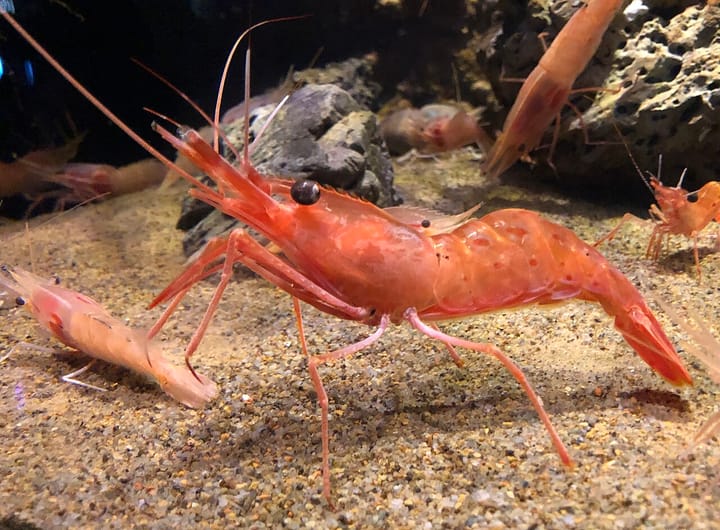Why Pollachi's Nutmeg and Mace Is So Expensive
Discover why Pollachi's nutmeg and mace command premium prices worldwide—from their ultra-low 8.5% moisture content to direct farmer exports that eliminated middlemen, revolutionizing Tamil Nadu's spice trade.
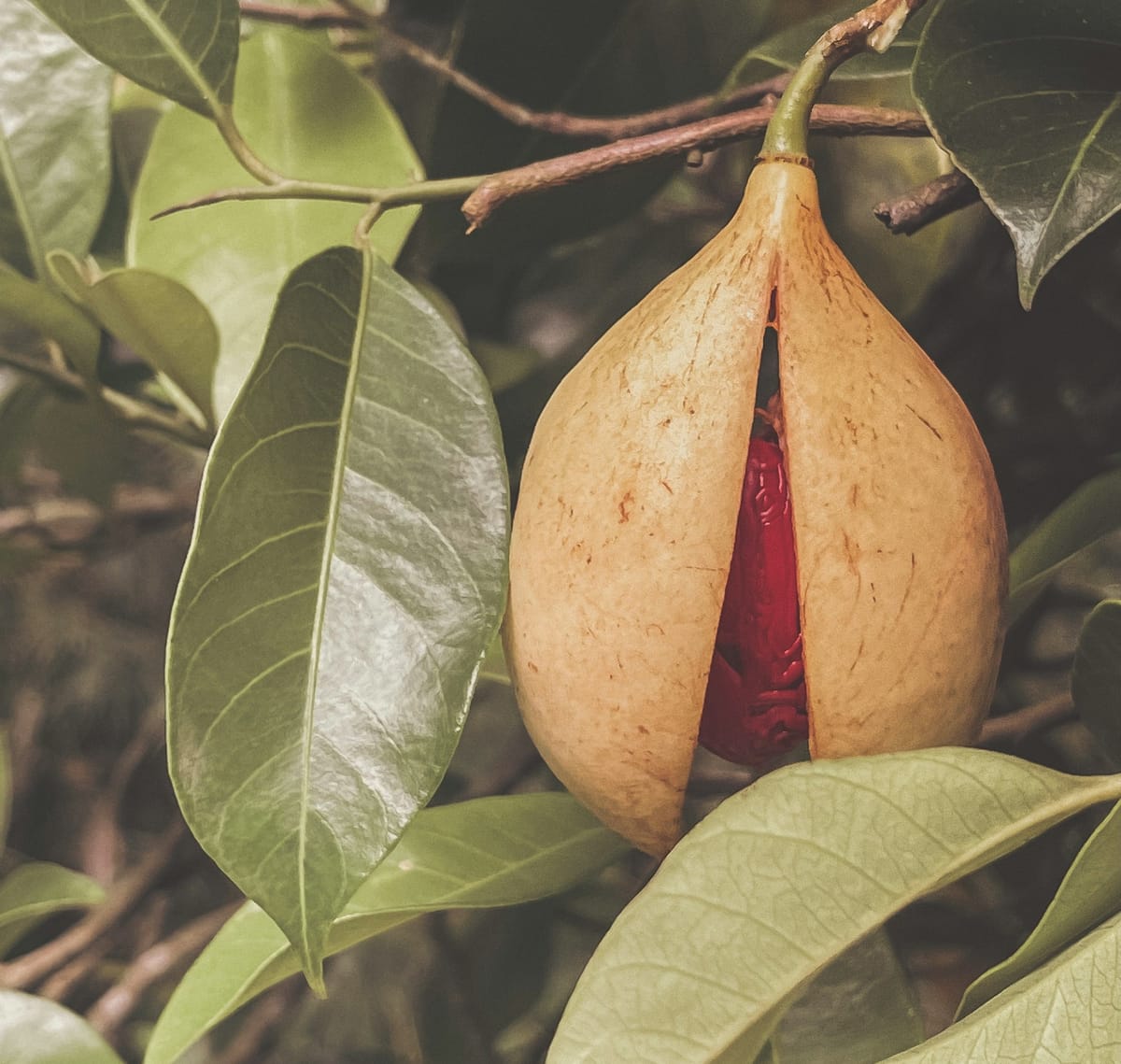
In Tamil Nadu's Pollachi region, something remarkable has happened.
Local farmers have ditched the middlemen and now sell their nutmeg and mace directly to international buyers, fetching $22 per pound for mace nearly six times what American producers get.
This isn't just luck; it's the result of exceptional quality, smart business decisions, and spices that truly stand out.
The Revolution That Changed Everything
Until recently, Pollachi's nutmeg farmers were getting squeezed.
Traders would show up, complain about quality without explanation, and offer whatever price they felt like paying.
The farmers had no leverage and no knowledge of real market prices.
That changed in 2022 when R. Ranjit Kumar, a Cambridge-educated engineer who returned home to care for his sick father, united 120 farmers into a cooperative.
Today, the Pollachi Nutmeg Farmer Producer Company exports directly to Australia, Canada, and France, with annual revenues around $360,000.
By cutting out the middlemen, farmers finally earn what their spices are worth.
Why Pollachi Spices Are Different
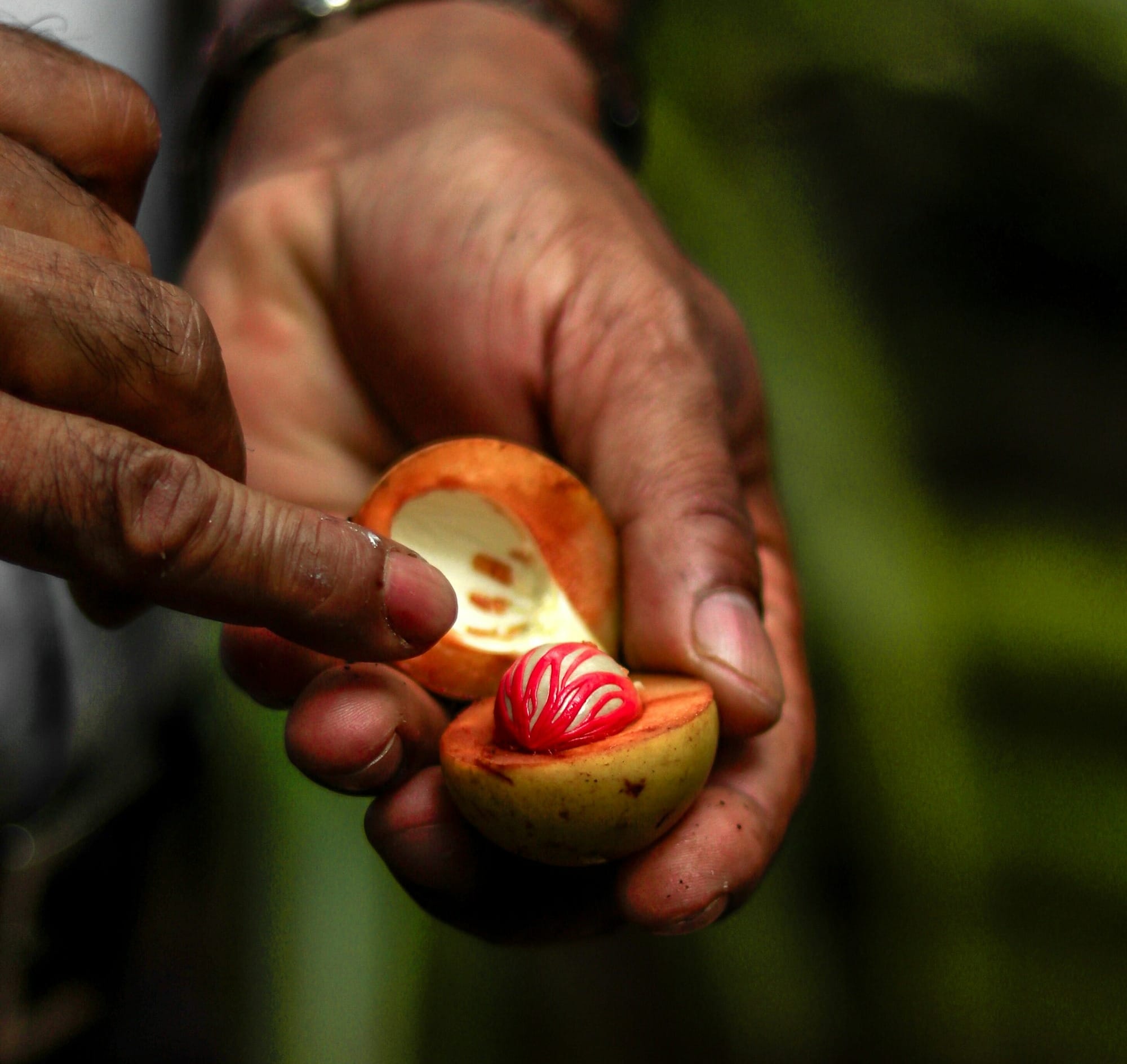
Location matters enormously in spice cultivation. Pollachi sits east of the Western Ghats at 300-1000 meters elevation, creating an unusual sweet spot—enough rain to grow nutmeg, but not so much that fungus becomes a problem.
This drier climate produces something special: nutmeg with moisture content between 8-8.5%, well below industry standards.
Lower moisture means everything in the spice trade.
The flavors concentrate. Shelf life extends. Fungal risk drops. Export value soars.
While Kerala's wetter climate produces more nutmeg per tree, Pollachi's drier conditions create superior quality.
Their mace particularly impresses buyers—it maintains better weight and appearance than mace from Indonesia, Sri Lanka, Grenada, or even Kerala.
The growing season here stretches to nine months instead of the usual six, allowing essential oil concentrations to reach 12-15% compared to the global average of 8-10%.
You can actually taste the difference—Pollachi nutmeg packs more punch per gram, meaning chefs use less to achieve the same flavor impact.
Two Treasures from One Tree
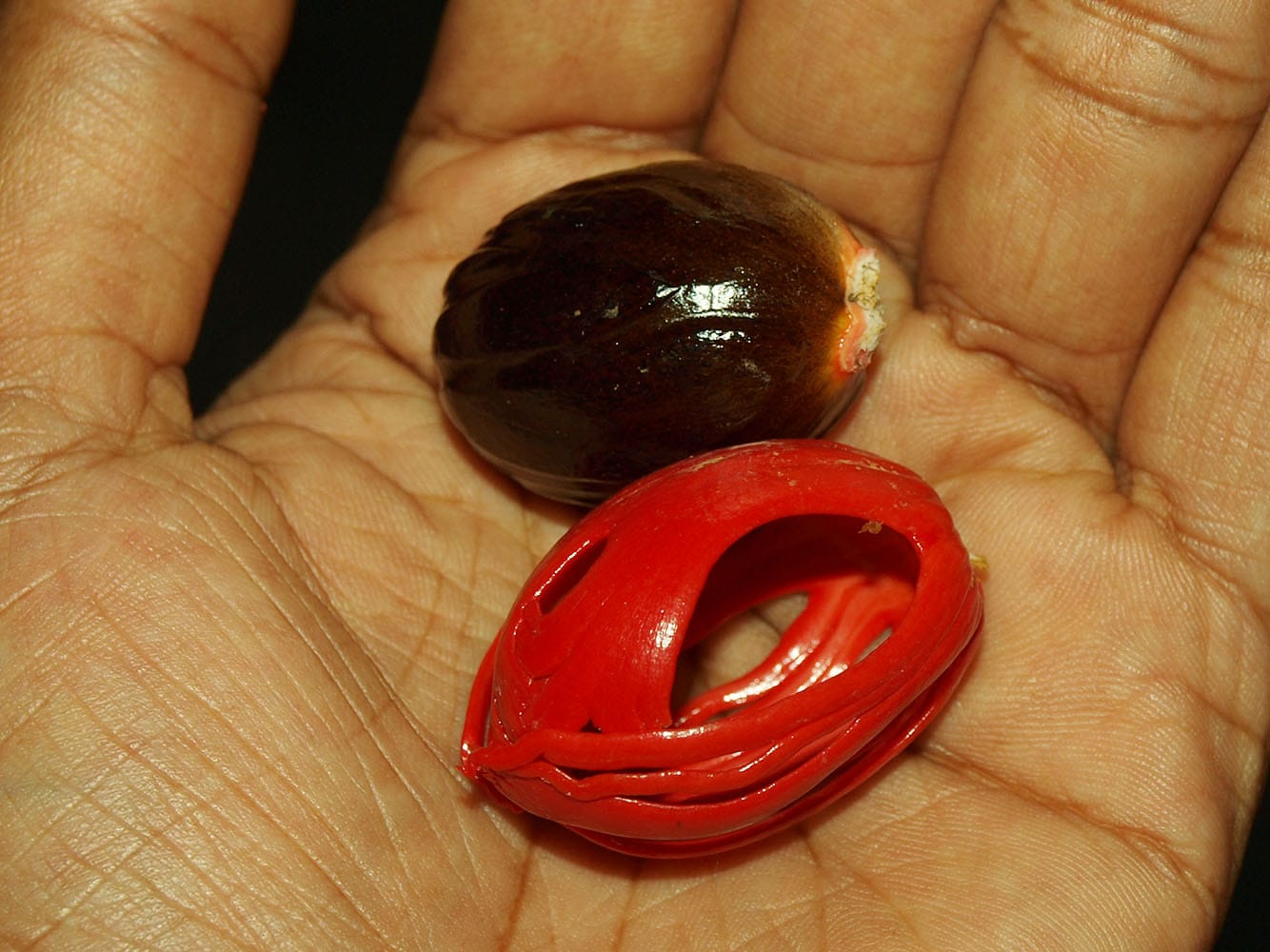
Every nutmeg fruit contains two distinct spices. Inside the apricot-like fruit, you'll find a dark seed (the nutmeg) wrapped in a bright red web (the mace).
They're siblings, not twins—nutmeg brings bold warmth with hints of pine and clove, while mace whispers with floral notes and subtle sweetness.
Both contain myristicin, the compound responsible for their characteristic warmth, but mace has extra aromatic compounds that make it more delicate and, often, more valuable.
Think of nutmeg as the workhorse spice in your garam masala or béchamel sauce, while mace is the finishing touch on delicate seafood or light-colored sauces where subtlety matters.
The Processing
Harvesting nutmeg requires patience. Trees don't hit their stride until they're twenty years old, but then they'll produce for a century.
Workers use long poles with nets to pluck fruits from branches up to forty feet high, timing it perfectly—too early and the oils haven't developed, too late and the fruit splits on the tree.
What happens next separates Pollachi from industrial operations. While big processors use high-heat ovens for speed, Pollachi farmers stick to gentle, traditional drying.
Mace spreads on bamboo mats under filtered sunlight, carefully turned over 10-14 days as it transforms from scarlet to golden-orange. This slow process preserves the volatile compounds that give these spices their complex aroma.
The nutmeg seeds dry for six to eight weeks until you can hear the kernel rattle inside—the ancient test for readiness.
No rush, no shortcuts. Premium grades skip the lime treatment common elsewhere, keeping the pure flavor intact. It's more work, but when you're selling to luxury markets, every detail counts.
From Farm to Global Market
The cooperative changed everything about how Pollachi farmers do business.
Members bring their harvest to a central hall where it's graded into three quality tiers. First-grade goes straight to export; second-grade supplies local oil extractors. Everything sells within ten days.
Farmers now understand their product's true value.
They've visited research institutes, learned scientific cultivation methods, and can back up quality claims with lab results.
When traders try to lowball them, they have ammunition—test certificates showing superior oil content and lower moisture than competitors.
The transparency appeals to modern buyers. Export customers know exactly where their spices come from, how they're processed, and who grew them.
In an era when "farm to table" isn't just marketing but a genuine consumer demand, Pollachi delivers the real thing.
Why the Premium Makes Sense
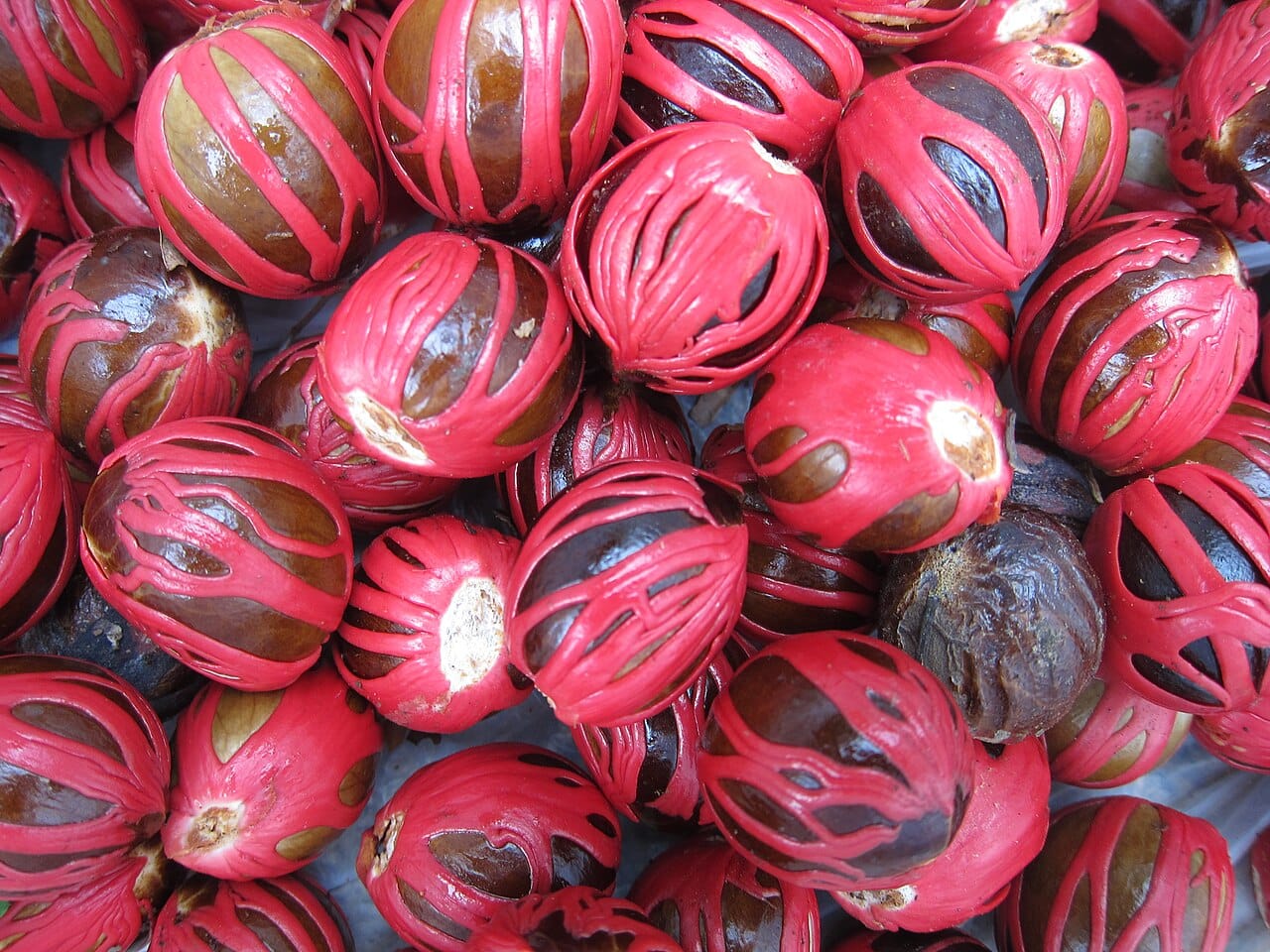
For high-end users, paying five times more for Pollachi spices is actually smart economics.
A restaurant might use a third less Pollachi nutmeg than standard nutmeg to achieve the same flavor—the concentration is that much higher.
The lower moisture content means longer shelf life and less waste from spoilage.
Specialty retailers can tell a compelling story.
These aren't just spices; they're the product of specific terroir, traditional processing, and farmers who've taken control of their destiny.
The Bigger Picture
Pollachi's story matters beyond nutmeg. It shows what happens when farmers refuse to remain price-takers in a system stacked against them.
By organizing, maintaining quality, and connecting directly with end users, they've broken the commodity trap that keeps agricultural communities poor worldwide.
The model isn't universally applicable—not every crop has Pollachi nutmeg's combination of quality differentiation and luxury demand.
But the principle holds: exceptional quality, properly marketed, commands exceptional prices.
A Spice Worth Savoring
Next time you grate nutmeg over your latte or add mace to your holiday cookies, consider what you're tasting.
If it's from Pollachi, you're experiencing the result of perfect growing conditions, traditional processing that preserves rather than rushes, and farmers who've successfully fought for the true value of their work.
That warmth spreading across your palate, those layers of flavor that keep revealing themselves—they tell a story of transformation.
From farmers at the mercy of traders to entrepreneurs shipping directly overseas. From commodity pricing to premium positioning. From survival to success.
In a world of shortcuts and compromise, Pollachi's nutmeg and mace remind us that taking time, maintaining standards, and respecting tradition still matter. And yes, they're worth every penny of that premium price.


